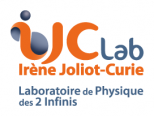GWTC-2: Compact Binary Coalescences Observed by LIGO and Virgo During the First Half of the Third Observing Run
https://in2p3.cnrs.fr/fr/cnrsinfo/nouvelle-edition-du-catalogue-ligo-virgo-suite-run-o3 La version française du "Science summary" qui accompagne la mise à jour du catalogue La publication scientifique: GWTC-2: Compact Binary Coalescences Observed by LIGO and Virgo During the First…









